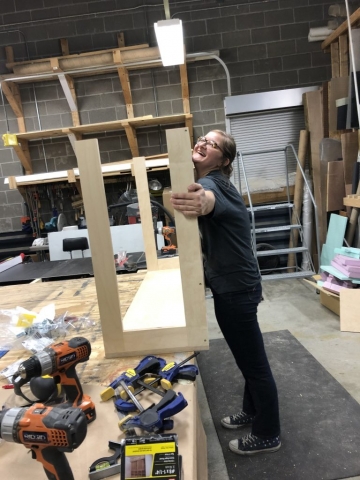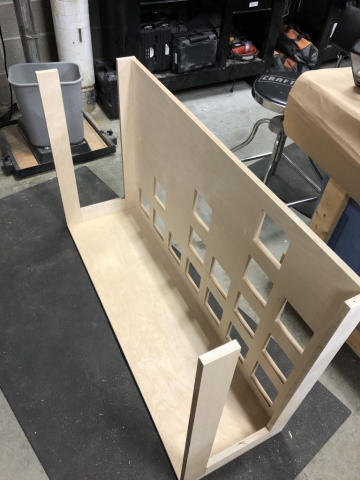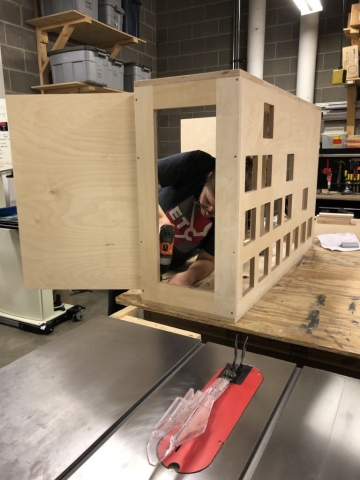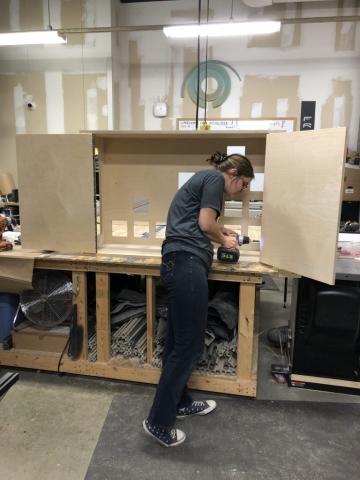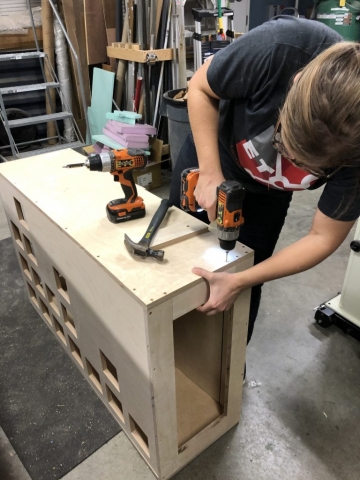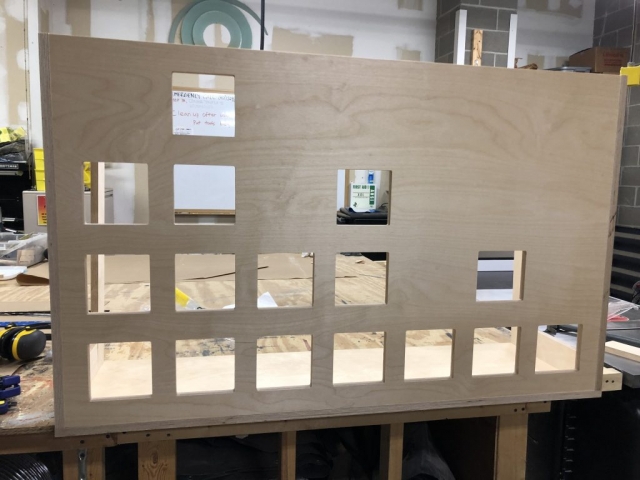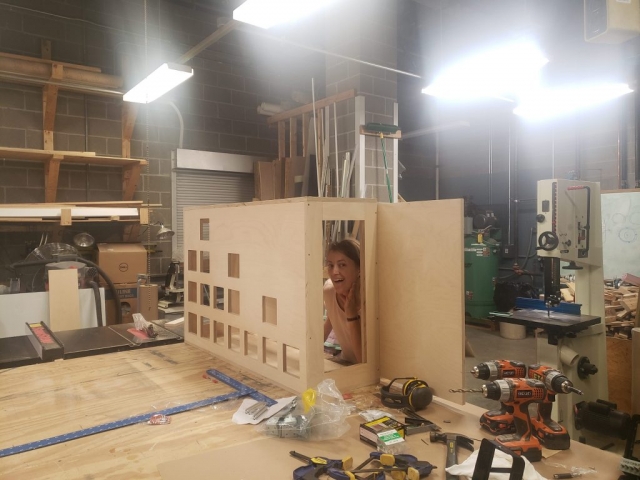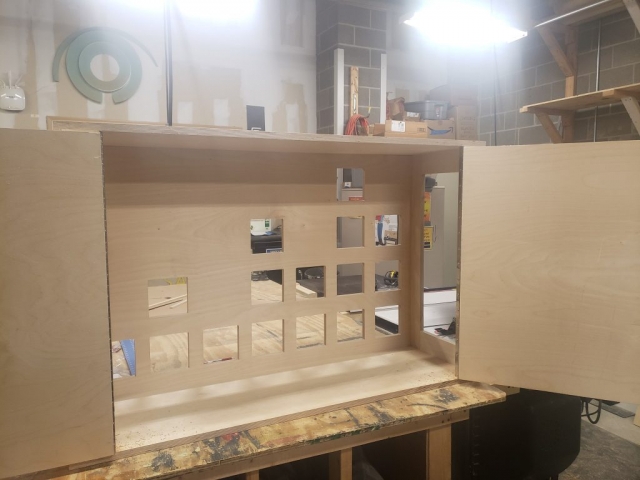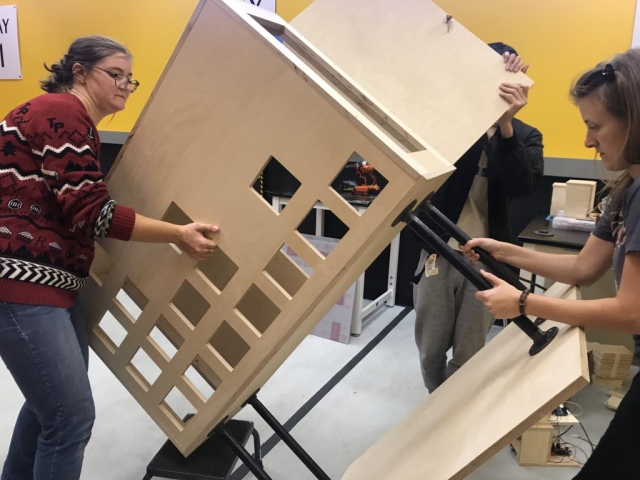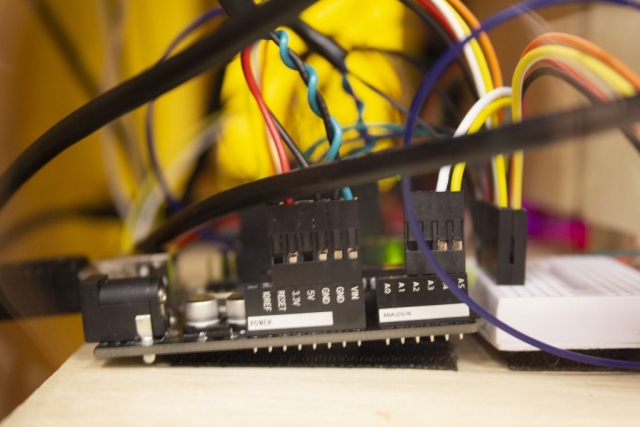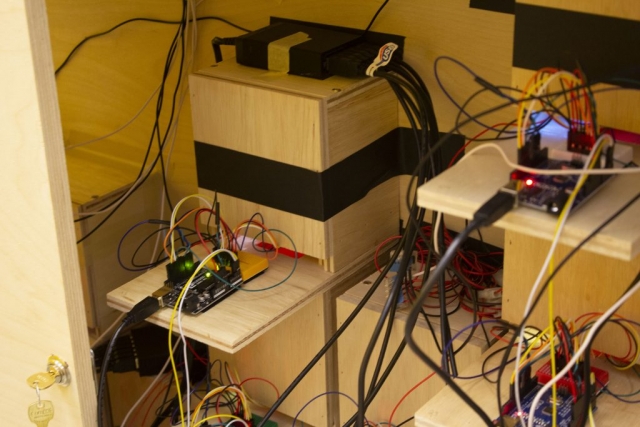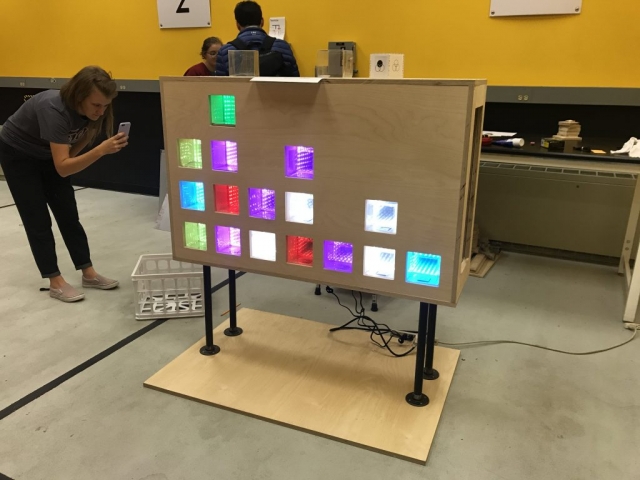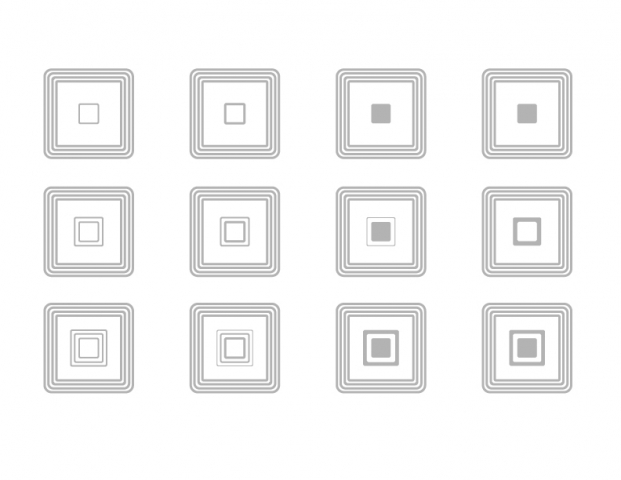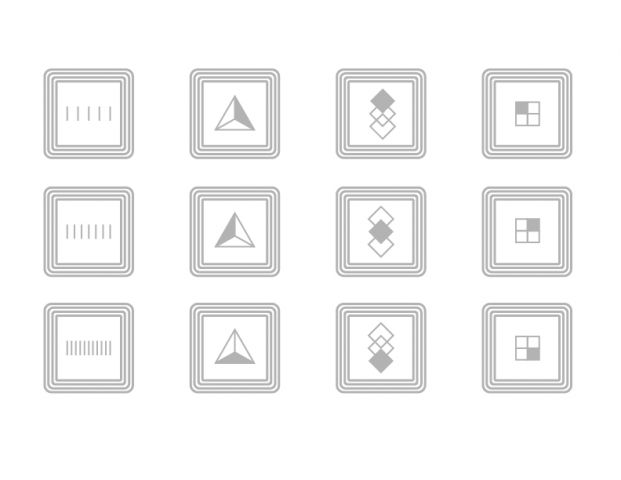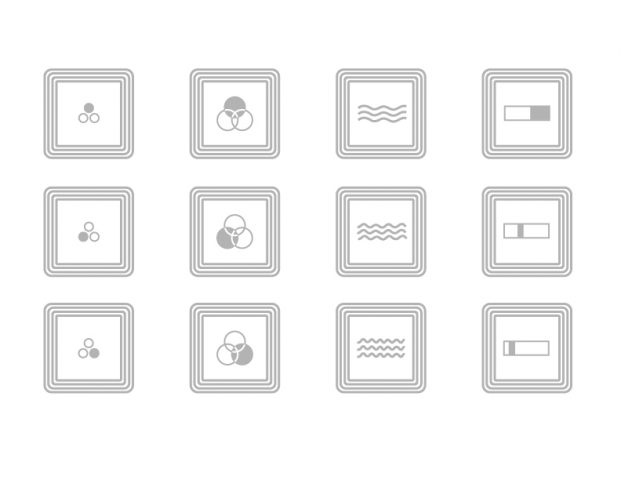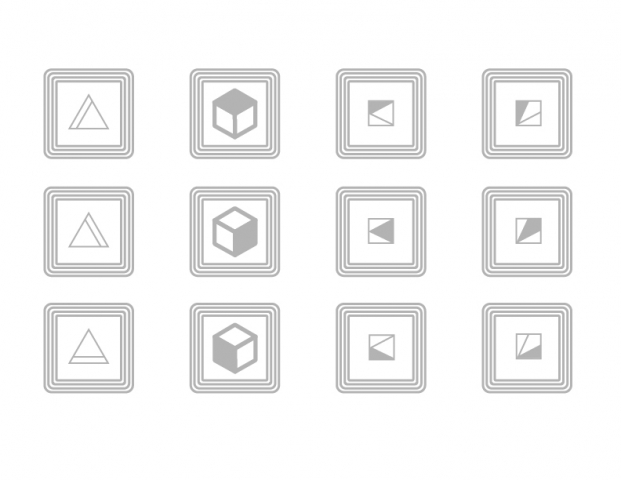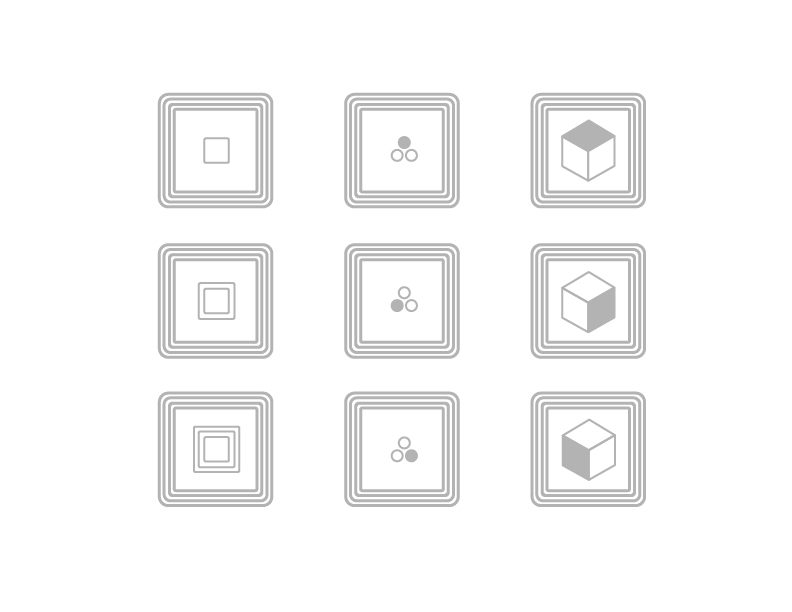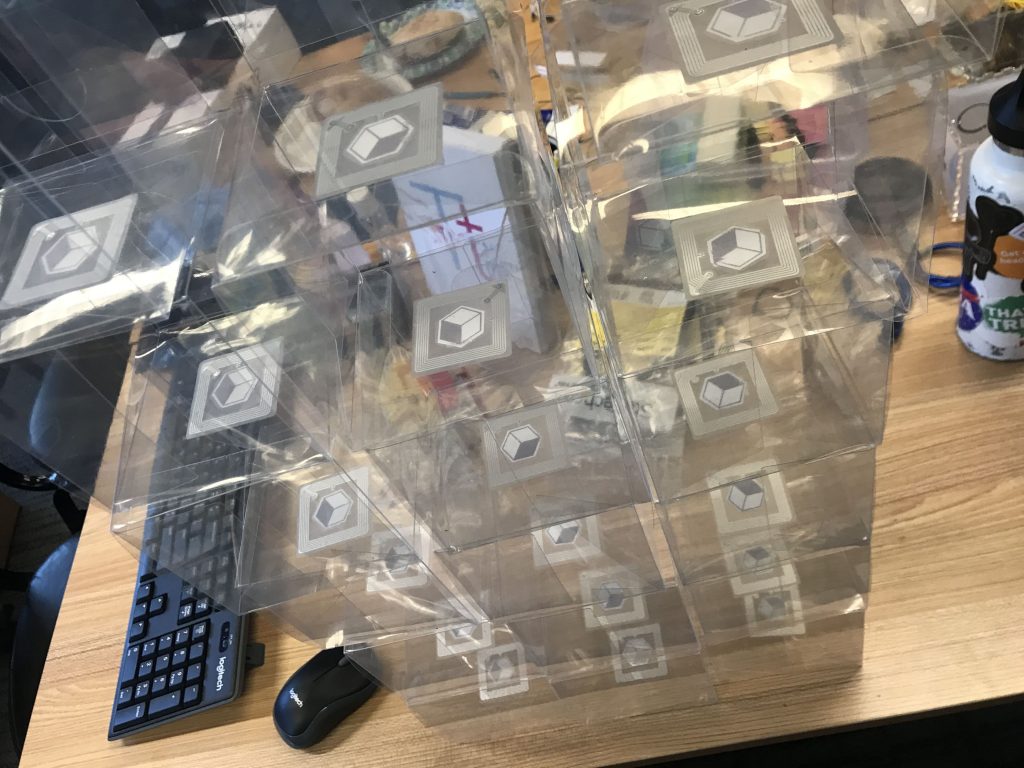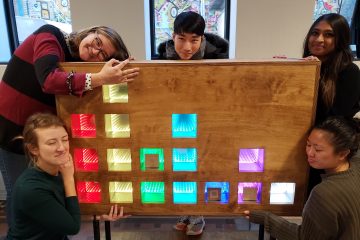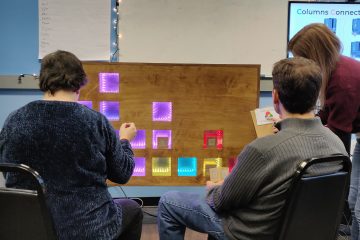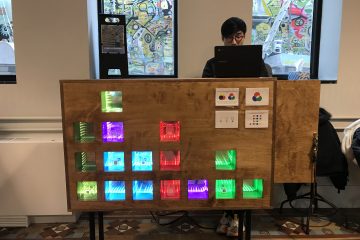Week 10
This week was all fabrication and tech as we prepared for ETC Playtest Day on Saturday. We were so excited that we got our entire installation up and running on the first try! After all of our planning, and perfection of the fab/tech on our two goldspikes, we were able to easily replicate the design sixteen times over. Also, with all the thoughtful planning of power and wiring by Nidhi and Wei, everything turned on! You can watch the grand unveiling below and our genuine reactions (just make sure to turn down the volume first!).
We also celebrated Diwali this week and Halloween!
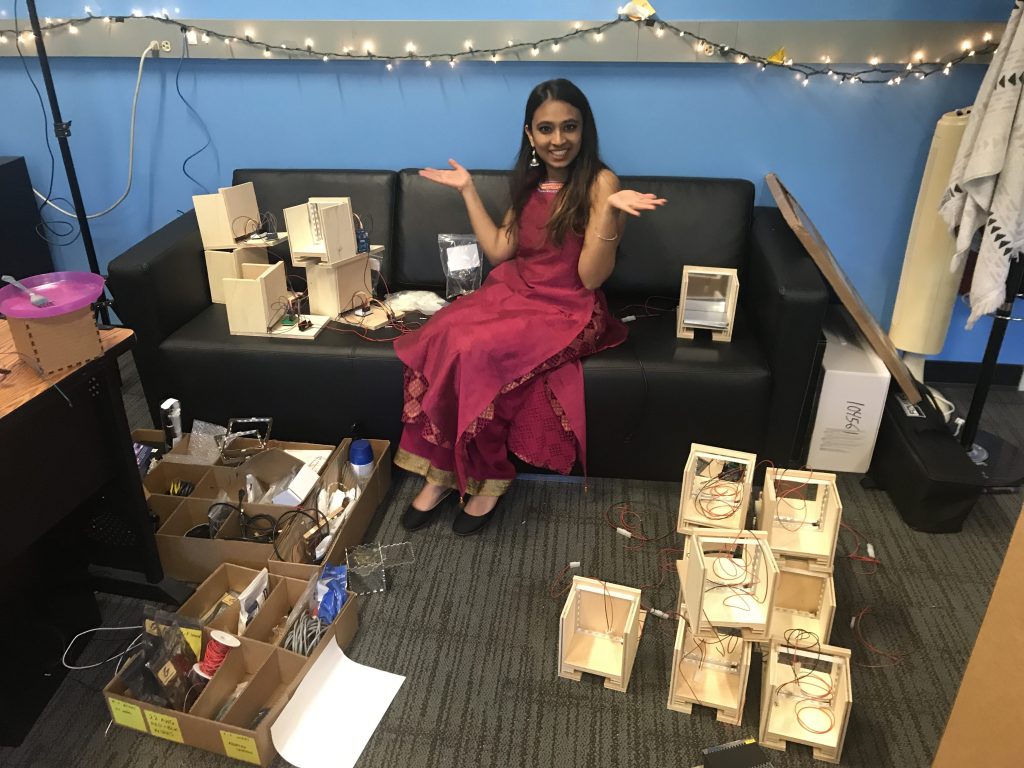
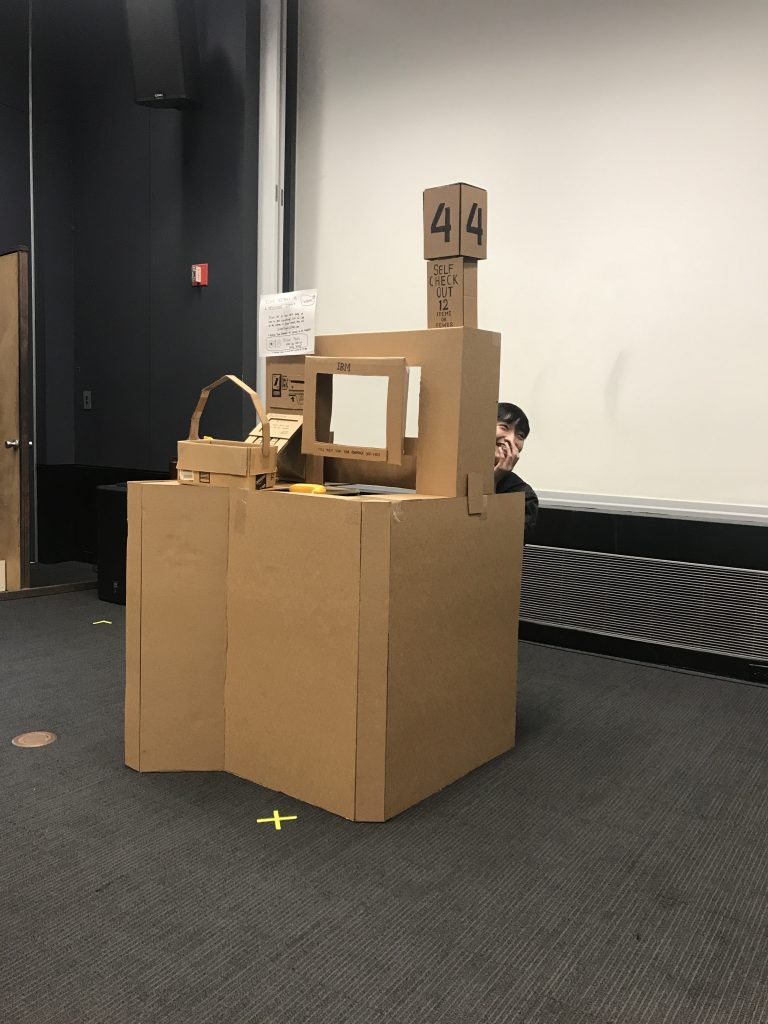
Marissa and Emily spent the week assembling the installation frame complete with the polycarb side windows and back doors that open to access all of the tech.
Given that we plan on staining the installation next week, we temporarily gaff taped all of the modules in for the playtest day.
After putting it all together, we named all of our modules (with both professional and nicknames) to be able to address them appropriately for serial communication. While we already have all the modules serially wired together in columns, we were unable to have the hidden interactions running for playtest day.
Simultaneously, we worked on symbol design for the blocks, partially inspired by the preference of students from the playtest (they liked the concentric circles and color model symbols. We also explored new designs that played around with the theming of frequency and wavelength as seen the front fab layout design. The concentric gray square lines resemble the new RFID sticker tags that are being used in replacement of the cards. These new sticker tags were recommended by the Museum staff to showcase the tech a bit more.
We ultimately presented students with these three designs inspired by the ones students liked during the last playtest, and went with the cube design for playtesting, because it looked intriguing (we soon learned that this was confusing).
We also wanted to experiment with providing hints and scaffolding moments during the playtest. We came up with these hints to provide guests.
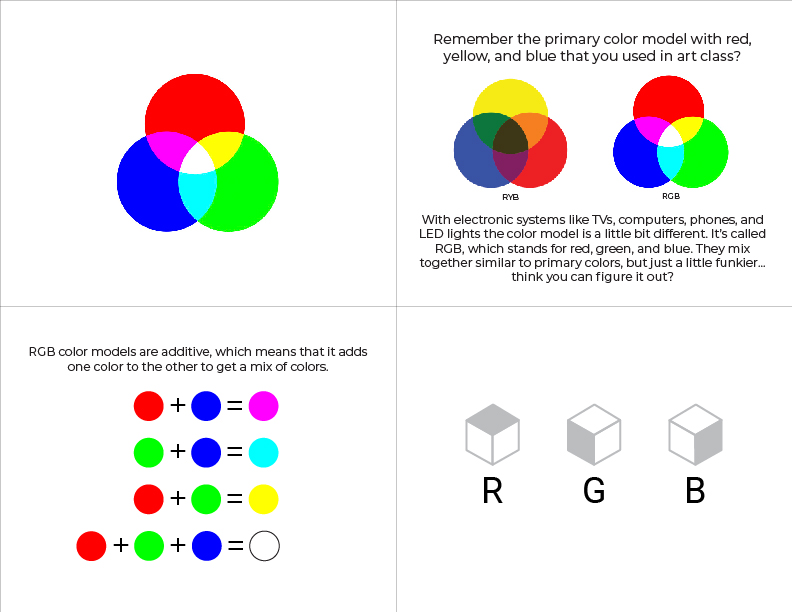
Playtesting
On Saturday, we had the ETC Playtest Day, where the public is invited to sign up and playtest our experience! We were so excited to be able to finally playtest with our entire installation. Over the course of the day, we had about 30 playtesters between the ages of 6 to 16.
For this playtest, we wanted to:
- Test the final fabrication with all the cubbies running
- Is the player experience preserved?
- Are players engaged?
- Experiment with how to label blocks and cubbies
- Test design of symbols: Which do students like best?
- Test cubby base symbol: Are guests able to figure out how to align the RFID tags?
- Test hints/scaffolding moments to guide the player experience
- Test how many blocks we need for a compelling experience
Results:
Engagement:
- Students reported an overall higher engagement score than even the VR prototype at 3.875/5 (VR prototype was rated at 3.75 with ~40 students)
- However, we did have a fair amount of younger students outside of our demographic who enjoyed the experience (6-8 year olds)
- Younger students were drawn in by the colors and being able to affect the experience; however, they wanted more colors (specifically pink)
- Older students would think at first that this experience was “too young” for them, but then when they realized there was a challenge/logic to it, they became engaged in trying to figure it out
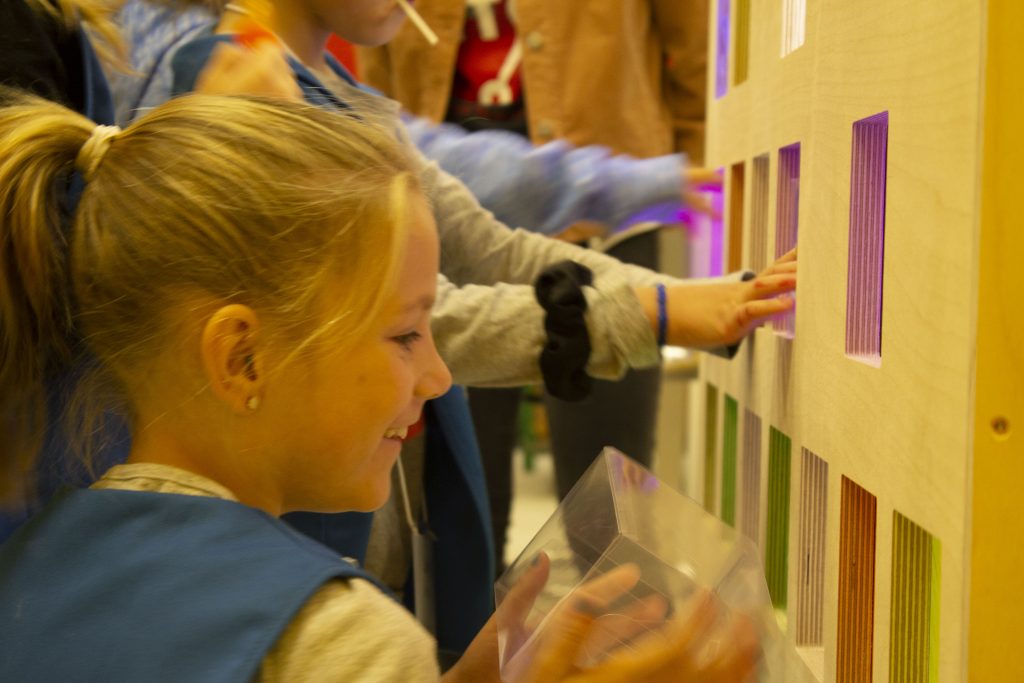
Most frustrating moments:
- Block symbols were confusing
- Couldn’t make the color pink or orange
- Not having a clear slate to begin with
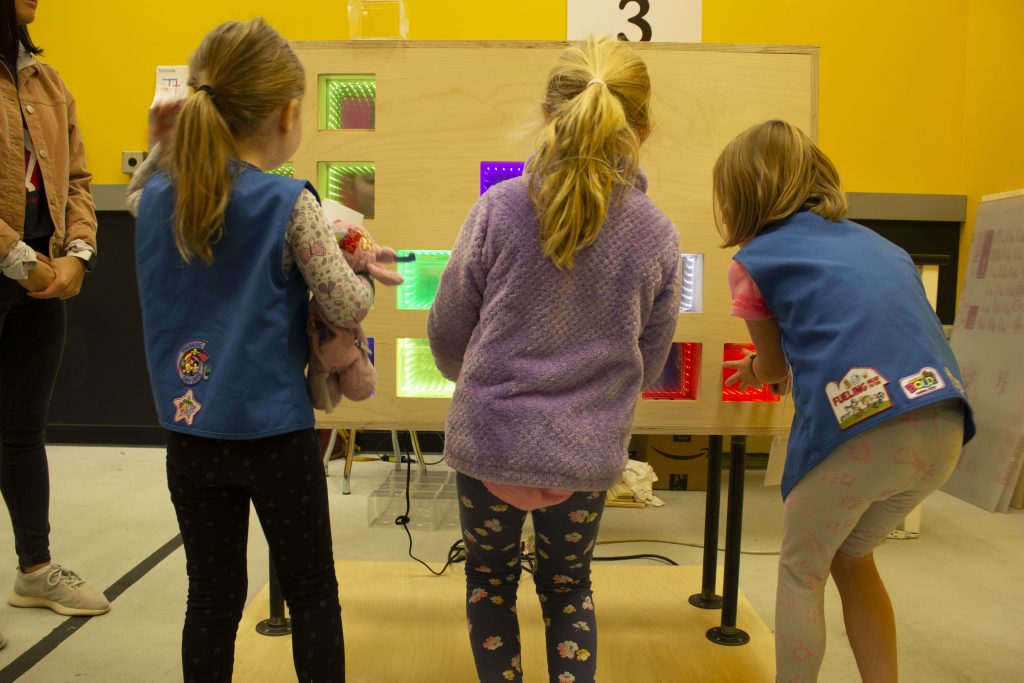
Most favorite moments:
- Matching the colors
- Making the colors
- The interactivity of the experience
- Liked being able to figure out how to change the colors
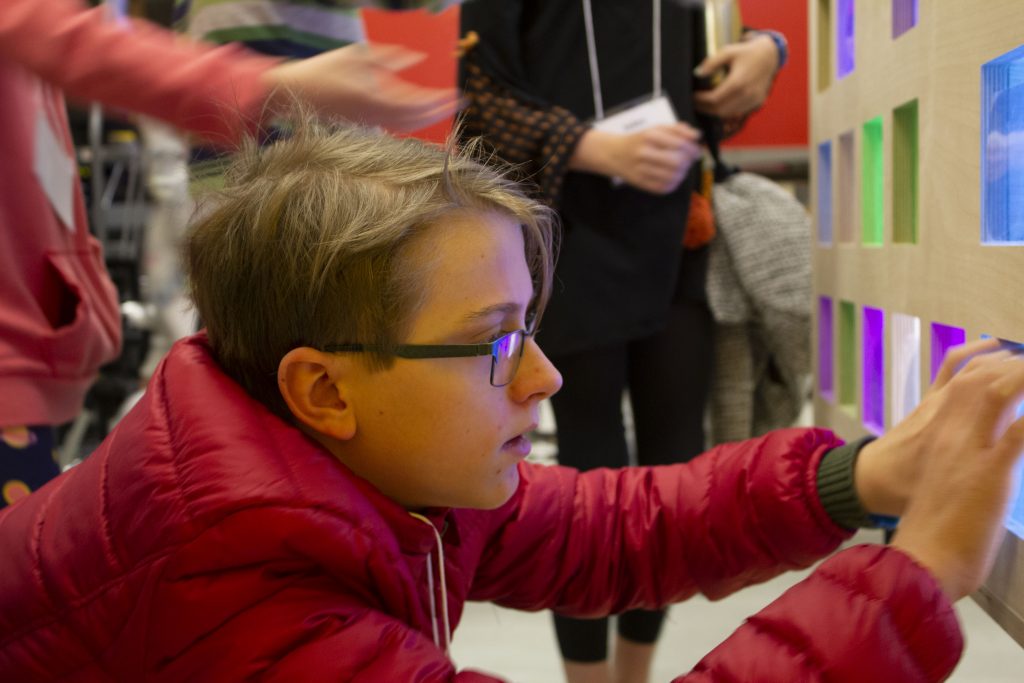
Was there anything that you wanted to do, but couldn’t?
- Mostly no
- One person wanted a real video game, but liked that it was a whole simple game
- Wanted to make pink or an orange
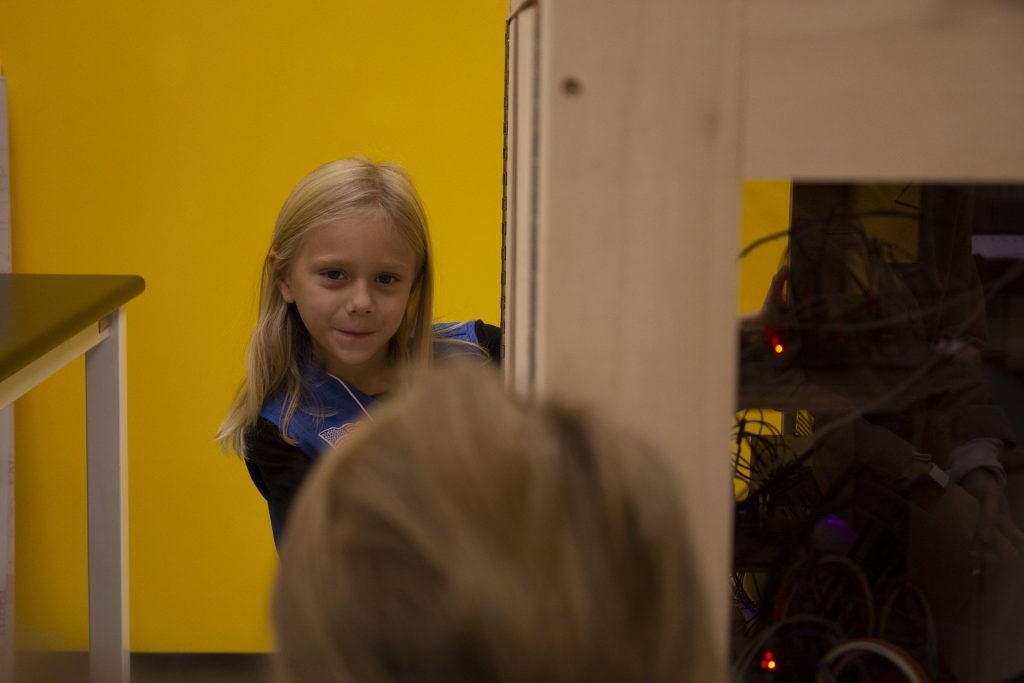
If you had a magic wand, what would you change?
- Add sparkles
- More colors
- Block design
- Clearer instructions
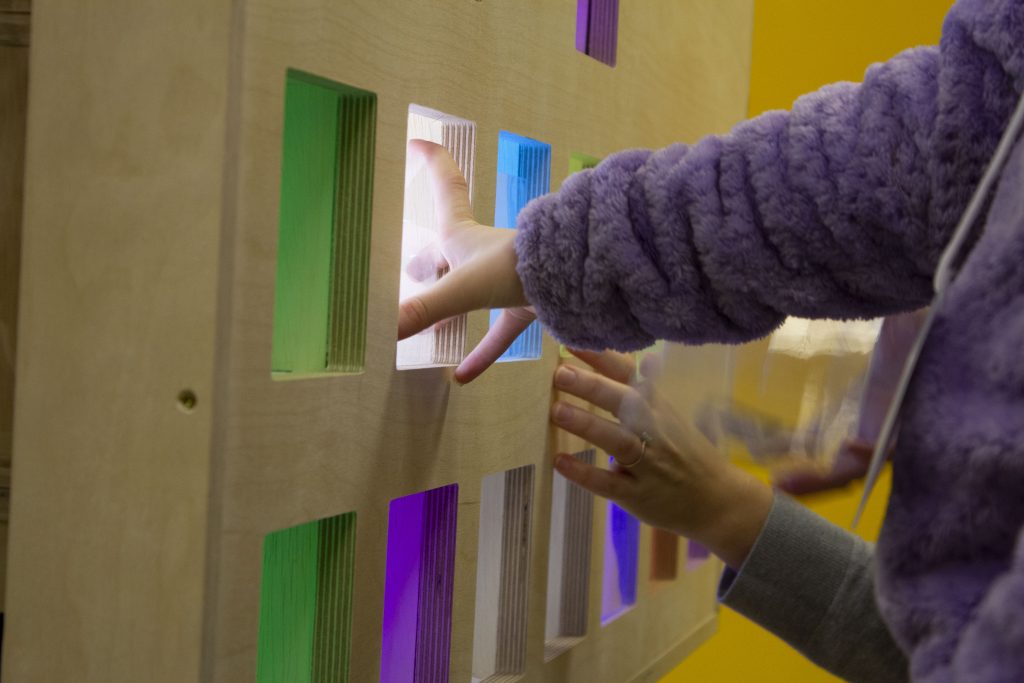
What were you doing?/How would you describe this game to your friends and family?
- Younger guests described it as a fun color mixing experience
- Older guests described it as a puzzle game where you had to figure out patterns
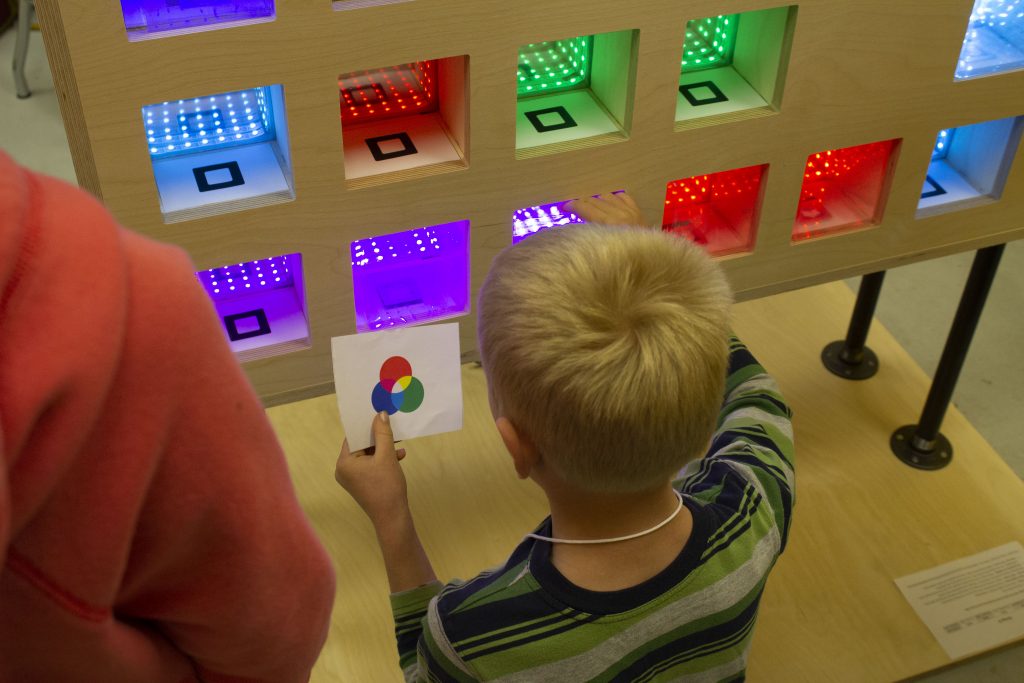
Block Design:
- Block symbols that we used were too confusing! As the orientation of the symbol was unclear. But guests thought that it looked cool!
- Overall, guests preferred symbols over outright RGB or color labelling (only one guest wanted that), because they wanted more of a challenge
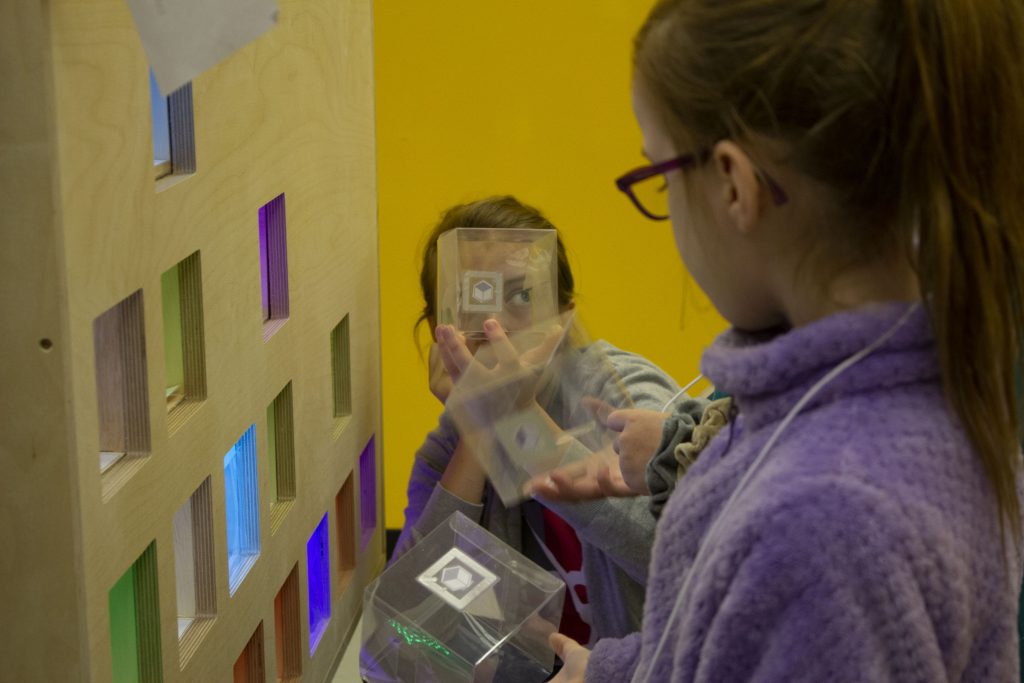
Cubby Base Symbol:
- Only half of guests noticed the base symbol and aligned them, but also we had younger students, who weren’t tall enough to see all of them
- We may have to consider multi-sided tags again, but with all the symbols on each side
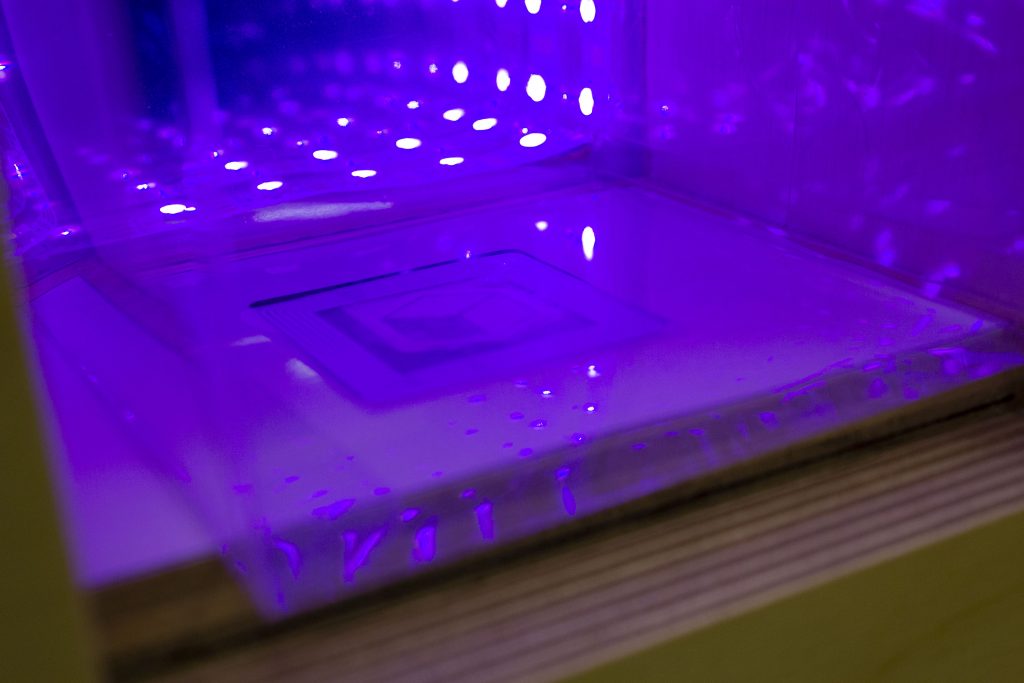
Hints:
- Guests wanted the hints
- After seeing the first hint, guests would understand that the experience was about color mixing and would figure out the patterns
- However, we realized during playtesting, that the next hint that we needed to give the guest was how the symbol correlated to the color
- We did not test scaffolding moments, as guests were already excited about the experience and there was not enough time
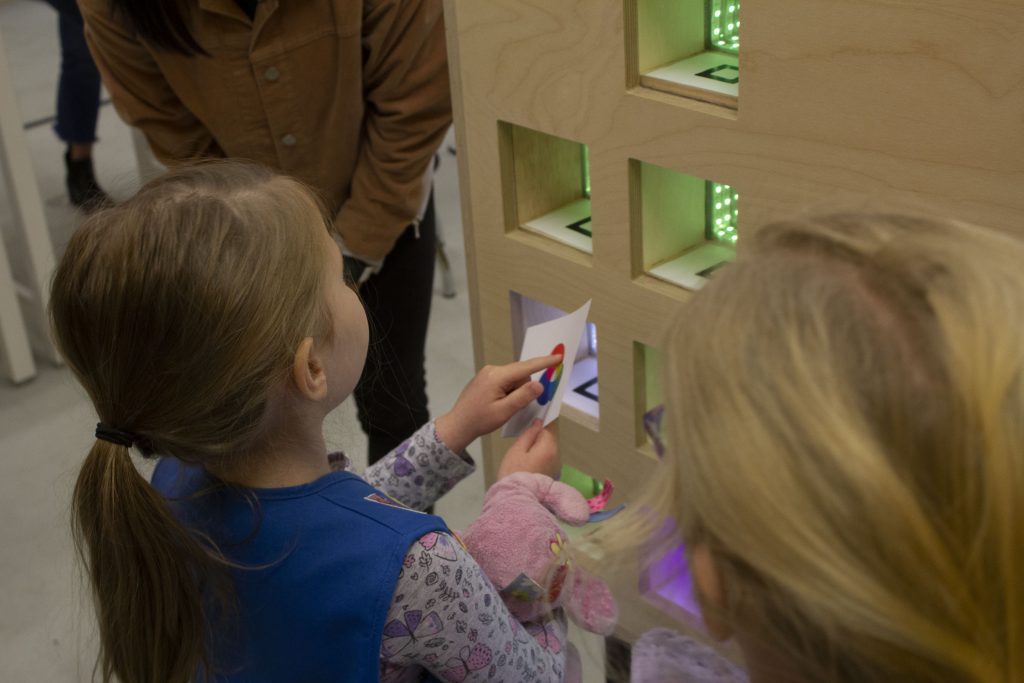
Blocks Number:
- Depending on the group and the number of participants, they wanted a different amount of blocks
- However, guests never wanted more than 9 blocks
- When there were 9 blocks, most ended up on the ground
- Guest would sort blocks, and having more blocks made the experience more confusing
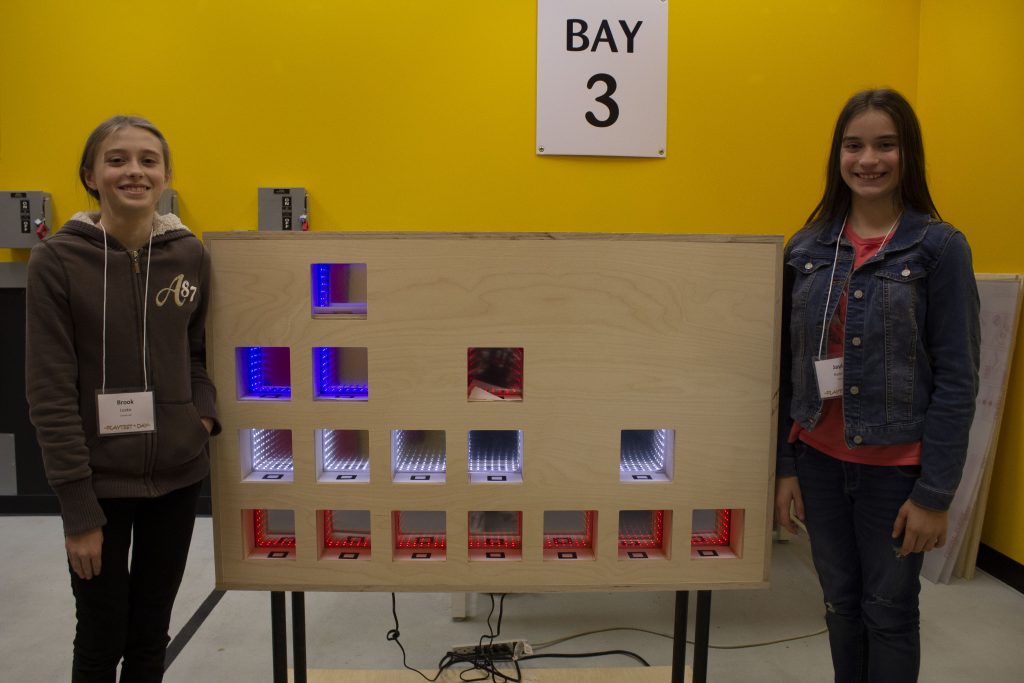
Our next playtest will be next Friday at the MuseumLab, where we will bring our installation! For the next playtest, we will:
- Add serial communication
- Test hidden interactions
- Adjust hints and scaffolding
- Change order of hints
- Finalize design of block
- Test concentric circles
- Test multi-sided blocks
- Test materials
Next Steps
- Stain installation
- Install modules semi-permanently for travel
- Add in serial interactions
- Finalize block fabrication
- Finalize symbol design
- Adjust hints/scaffolding
